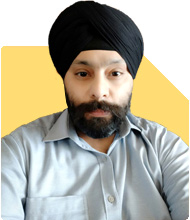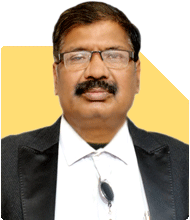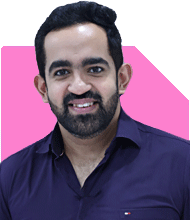Am I on the right track with my investments at 34?
Ramalingam Kalirajan |8093 Answers |Ask -Follow
Mutual Funds, Financial Planning Expert - Answered on Jul 17, 2024
He has an MBA in finance from the University of Madras and is a certified financial planner.
He is the director and chief financial planner at Holistic Investment, a Chennai-based firm that offers financial planning and wealth management advice.... more

I am 34 now. Currently invested 27000 K in Nippon small cap, sbi long term equity, Parag flexi cap fund, motilal oswal next 50 index fund, hdfc elss fund, sbi contra fund. I have invested 5K in ppf and 4K in life insurance policy. Will this work as proper investment??
Mutual Fund Investments
Small Cap Fund
Potential: High growth potential in small companies.
Risk: High due to volatility.
Recommendation: Good for long-term growth if you can handle high risk.
Long-Term Equity Fund
Tax Benefits: Provides tax benefits under Section 80C.
Returns: Moderate returns with a three-year lock-in period.
Recommendation: Good for tax-saving and long-term goals.
Flexi Cap Fund
Flexibility: Invests across large, mid, and small cap companies.
Risk: Balanced risk with good growth potential.
Recommendation: Suitable for diversified growth.
Index Fund
Disadvantages: Passive management, may underperform actively managed funds.
Recommendation: Consider switching to actively managed funds for better returns.
ELSS Fund
Tax Benefits: Provides tax benefits under Section 80C.
Returns: Good returns with a three-year lock-in period.
Recommendation: Good for tax-saving and long-term goals.
Contra Fund
Strategy: Invests in undervalued stocks with potential for recovery.
Risk: Moderate risk with good growth potential.
Recommendation: Suitable for long-term growth.
Savings Plans
Public Provident Fund (PPF)
Security: Safe investment with guaranteed returns.
Returns: Moderate, tax-free returns.
Recommendation: Good for long-term savings and tax benefits.
Life Insurance Policy
Security: Provides financial security to your family.
Returns: Lower returns compared to mutual funds.
Recommendation: Evaluate the policy to ensure it meets your insurance needs.
Diversification and Risk Management
Portfolio Diversification
Importance: Diversify investments across asset classes to reduce risk.
Strategy: Mix of equity funds, debt funds, and savings plans.
Regular Review
Importance: Review your portfolio regularly to ensure it meets your goals.
Strategy: Adjust investments based on performance and market conditions.
Disadvantages of Index Funds
Passive Management
Risk: May underperform actively managed funds in volatile markets.
Recommendation: Actively managed funds offer professional management and potential for higher returns.
Disadvantages of Direct Funds
Lack of Expertise
Risk: Requires active monitoring and management.
Recommendation: Investing through a Certified Financial Planner provides professional guidance.
Complexity
Risk: Managing direct funds can be complex.
Recommendation: Regular funds through a CFP simplify the investment process.
Tax Efficiency
Long-Term Capital Gains Tax
Strategy: Plan investments to minimize tax liability.
Benefits: Equity funds held for more than a year are taxed at 10% on gains above Rs 1 lakh.
Emergency Fund
Importance
Liquidity: Maintain an emergency fund for unexpected expenses.
Strategy: Provides financial security and peace of mind.
Final Insights
Your current investments are diverse and well-placed. However, consider the following:
Switch from Index Funds: Move to actively managed funds for better growth.
Review Insurance Needs: Ensure your life insurance policy meets your needs.
Regular Review: Continuously monitor and adjust your portfolio.
By following these recommendations, you can achieve a balanced and growth-oriented investment portfolio.
Best Regards,
K. Ramalingam, MBA, CFP,
Chief Financial Planner,
www.holisticinvestment.in
You may like to see similar questions and answers below
Omkeshwar Singh | Answer |Ask -Follow
Head, Rank MF - Answered on Jan 04, 2021
Ramalingam Kalirajan |8093 Answers |Ask -Follow
Mutual Funds, Financial Planning Expert - Answered on Apr 30, 2024
Ramalingam Kalirajan |8093 Answers |Ask -Follow
Mutual Funds, Financial Planning Expert - Answered on May 07, 2024
Milind Vadjikar |1102 Answers |Ask -Follow
Insurance, Stocks, MF, PF Expert - Answered on Nov 20, 2024
Milind Vadjikar |1102 Answers |Ask -Follow
Insurance, Stocks, MF, PF Expert - Answered on Mar 12, 2025
Dr Dipankar Dutta |956 Answers |Ask -Follow
Tech Careers and Skill Development Expert - Answered on Mar 12, 2025
Radheshyam Zanwar |1412 Answers |Ask -Follow
MHT-CET, IIT-JEE, NEET-UG Expert - Answered on Mar 12, 2025
Radheshyam Zanwar |1412 Answers |Ask -Follow
MHT-CET, IIT-JEE, NEET-UG Expert - Answered on Mar 12, 2025
Inderpaul Singh |47 Answers |Ask -Follow
Leadership Coach - Answered on Mar 12, 2025
T S Khurana |398 Answers |Ask -Follow
Tax Expert - Answered on Mar 12, 2025
T S Khurana |398 Answers |Ask -Follow
Tax Expert - Answered on Mar 12, 2025
Rajesh Kumar Singh |192 Answers |Ask -Follow
IIT-JEE, GATE Expert - Answered on Mar 12, 2025
T S Khurana |398 Answers |Ask -Follow
Tax Expert - Answered on Mar 12, 2025
Aamish Dhingra |14 Answers |Ask -Follow
Life Coach - Answered on Mar 12, 2025





























